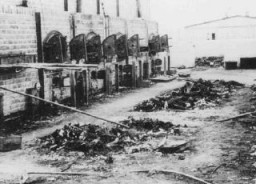You searched for: ���������������������,���������������500������������������fuk7778���CmYR
<< Previous | Displaying results 1-25 of 69 for "���������������������,���������������500������������������fuk7778���CmYR" | Next >>
-
Rescue in Denmark
ArticleThe Danish resistance movement, assisted by many ordinary citizens, coordinated the flight of some 7,200 Jews to safety in nearby neutral Sweden. Learn more about rescue in Denmark.
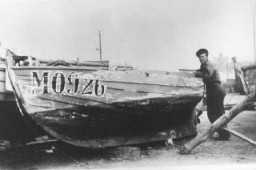
-
Poking Pine City Displaced Persons Camp
ArticleAfter WWII, many Holocaust survivors, unable to return to their homes, lived in displaced persons camps in Germany, Austria, and Italy. Read about Poking Pine City DP camp.
-
Berga-Elster ("Schwalbe V")
ArticleAt the Berga-Elster subcamp of Buchenwald, prisoners were forced to do dangerous and brutal work in tunnels to support fuel production for the German war effort.
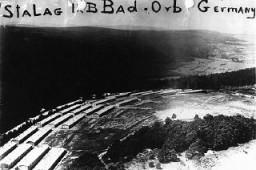
-
Izak Lichtenstein Testimony Excerpt
ArticleRead an excerpt from Izak Lichtenstein’s 1947 testimony about the resistance movement in the Lachva (Lachwa) ghetto.
-
Survivors prepare food
PhotoSoon after liberation, camp survivors cook in a field. Bergen-Belsen, Germany, after April 15, 1945. In the days before liberation, the prisoners had been left without food or water. An estimated 500 inmates per day died in the days preceding and following liberation.
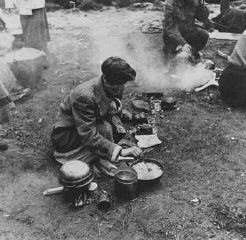
-
Mechelen
ArticleThe Mechelen camp, halfway between Antwerp and Brussels, was a transit camp for the deportation of Jews from Belgium during the Holocaust.
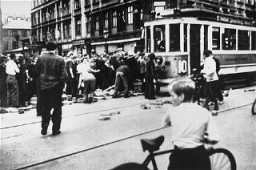
-
Eschwege Displaced Persons Camp
ArticleAfter WWII, many Holocaust survivors, unable to return to their homes, lived in displaced persons camps in Germany, Austria, and Italy. Read about Eschwege DP camp.
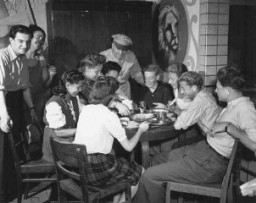
-
Ebensee Displaced Persons Camp
ArticleAfter WWII, many Holocaust survivors, unable to return to their homes, lived in displaced persons camps in Germany, Austria, and Italy. Read about Ebensee DP camp.
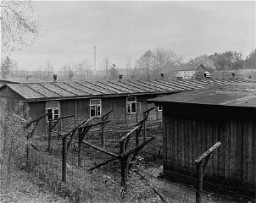
-
Lampertheim Displaced Persons Camp
ArticleAfter WWII, many Holocaust survivors, unable to return to their homes, lived in displaced persons camps in Germany, Austria, and Italy. Read about Lampertheim DP camp.
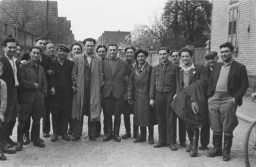
-
Diagram of the “Gypsy camp” in Hodonín u Kunštátu
DocumentDiagram of the Hodonín u Kunštátu (Hodonin bei Kunstadt) camp in the Protectorate of Bohemia and Moravia (Czech Republic). Before it was converted into a Zigeunerlager (“Gypsy camp”) in 1942, it served as a penal labor camp. Translation of key: Scale 1:500 Sleeping quarters Sleeping quarters Mess-hall Infirmary Offices, prison Living quarters for guard staff Economic/Agricultural Building Latrine Well Mess-hall for guard staff Pens for guard dogs

-
Salonika
ArticleSalonika, Greece was invaded and occupied by the Nazis in 1941. Learn more about the fate of the Jews in Salonika during World War II.
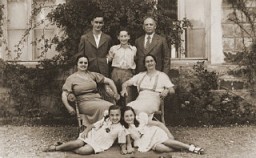
-
Amsterdam
ArticleLearn about Amsterdam during World War II and the Holocaust, including deportations of Jews to concentration camps and killing centers.
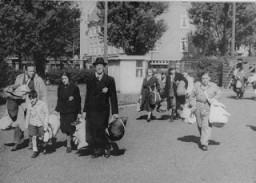
-
Kaufering
ArticleAt the Kaufering complex, part of the Dachau camp system, prisoners were forced to labor under brutal conditions to build underground facilities for German fighter aircraft production.
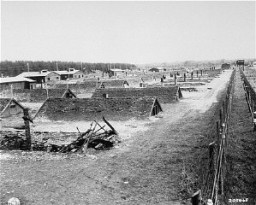
-
Nazi Political Violence in 1933
ArticleAfter Adolf Hitler became German chancellor on January 30, 1933, the SA and the SS unleashed waves of violence against political opponents and Jews. Learn more.
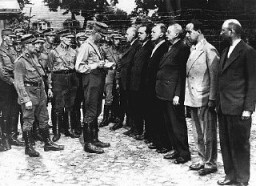
-
Germans bomb Coventry
FilmOn the night of November 14-15, 1940, almost 500 German bombers attacked the British industrial city of Coventry in central England. The bombers dropped 150,000 incendiary bombs and more than 500 tons of high explosives. The air raid destroyed much of the city center, including 12 armament factories and the historic Saint Michael's Cathedral. This footage shows scenes from the aftermath of the attack. The bombing of Coventry came to symbolize, to Britain, the ruthlessness of modern air warfare.
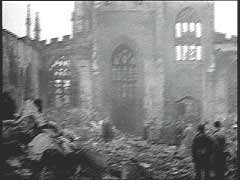
-
Tomasz (Toivi) Blatt describes the Izbica Jewish council (Judenrat) and German attacks (Aktionen) there
Oral HistoryAfter war began in September 1939, the Germans established a ghetto and Jewish council in Izbica. Tomasz's work in a garage initially protected him from roundups in the ghetto. In 1942 he tried to escape to Hungary, using false papers. He was caught but managed to return to Izbica. In April 1943 he and his family were deported to the Sobibor killing center. Tomasz escaped during the Sobibor uprising. He went into hiding, and worked as a courier in the Polish underground.

-
Polish Jews in Lithuania: Escape to Japan
ArticleAfter 1940, Polish refugees were pressured to leave Lithuania. Learn more about the diplomats that assisted them and their journey to Japan.
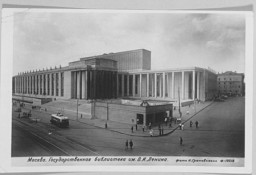
-
Melk
ArticleLearn about the establishment of and conditions in Melk, a subcamp of the Mauthausen camp system in Austria.
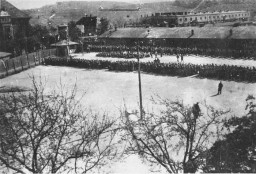
-
Jewish refugees arrive in Haifa and are interned
FilmThe ship "Henrietta Szold," carrying more than 500 Jewish "illegal" immigrants from Greece to Palestine, arrived in Haifa on August 14, 1946. British authorities immediately interned the immigrants and deported them to British internment camps on the island of Cyprus.
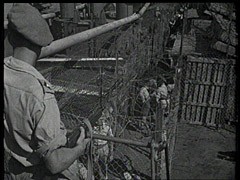
-
The refugee ship Pentcho
PhotoThis photograph shows the refugee ship Pentcho, carrying over 500 passengers bound for Palestine, sailing in the Aegean Sea. It had departed from Bratislava on May 18, 1940. In October 1940, while the Pentcho was sailing in Italian territory, its boiler exploded. The passengers and crew were able to get ashore and offload their supplies before the ship finally sank. On October 18 and 19, Italian authorities picked up the refugees and took them to Rhodes. They stayed there for over a year in a…
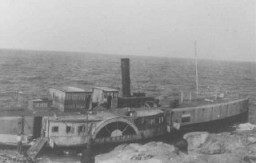
-
Rescue of Danish Jews, fall 1943
MapGermany occupied Denmark in 1940. When the Germans decided to deport Jews from Denmark in August 1943, Danes spontaneously organized a rescue operation and helped Jews reach the coast; fishermen then ferried them to neutral Sweden. The rescue operation expanded to include participation by the Danish resistance, the police, and the government. In little more than three weeks, the Danes ferried more than 7,000 Jews and close to 700 of their non-Jewish relatives to Sweden, which accepted the Danish refugees.…

-
Jewish Councils (Judenraete)
ArticleThe Germans established Jewish councils (Judenraete) in the ghettos. Forced to implement Nazi policy, council leaders and members faced impossible moral dilemmas.

-
Mühldorf
ArticleThe SS established the Mühldorf camp complex in mid-1944 as a satellite system of Dachau to provide labor for the production of the Messerschmitt 262 jet fighter.
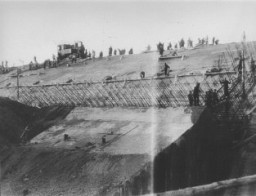
-
Jewish Community of Kalisz: Economy, Politics, Government
ArticleEconomic, governmental, and political life in the Jewish community of Kalisz between World War and World War II.
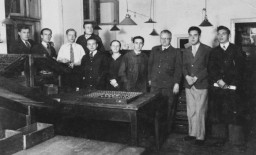
-
Liberation of Lublin-Majdanek
Timeline EventJuly 23, 1944. On this date, Soviet forces liberated the Lublin/Majdanek concentration camp in Poland.
